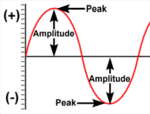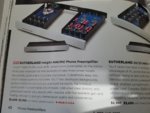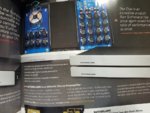I'm trying to get an understanding of how a phono preamp works (well) to improve your sound. As mentioned ive been enjoying the ph3d but this is someone going from no dedicated pre amp to a Sutherland.
I want to know what separates this from a much cheaper amp.
Is my understanding correct that a preamp takes your signal and then splits up the different frequencies, "treating" them and amplifying them and then sending them out as a new signal. Would the difference between a cheap and a good amp be that you split up the signal and process more frequencies to get a richer sound or is it simply the selection of internal electronic components that make it "better"?
My science knowledge of this is probably about the same as
@AnthonyI but I'll take a stab at saying the same things in different words.
Also, please note that I am not an engineer and will likely botch some of this below. Anyone with a stronger science background, please feel free to school me.
So ultimately an amp is an amplifier. This goes for a preamp as well.
Amplifiers by definition are electronic devices that can increase the power of a signal. Effectively, your phono pre-amp and your amp are doing the same thing, but at different levels.
So here is a wave:

The amplitude peak is the amount of energy - aka volume. So the signal waves coming from your turntable have a very very small amplitude. The phonostage's job is to get those signals up to a line level signal, which I believe is huge, like an exponential increase. The challenge is that when you amplify a signal, distortions happen. The other big challenge is we aren't looking at a single test tone in isolation. We're looking at voices, instruments, room sounds, electronic effects, etc, all being fed into one signal. All those constantly changing frequencies need to be amplified at the same rate, with minimal distortion. So the phonostage's job is to bring those signals up as cleanly as possible. A lot of that comes from signal path, materials, power supplies, etc. Just so we're clear, distortion isn't always heard. It's not like a cheap preamp sounds bad and ruins a song. BUT micro-distortions are what cause muddy sound, lack of instrument separation, loss of details, etc. The preamp does also somewhat shape the sound using RIAA (or DECCA or Columbia) curves.
This becomes exceptionally important in the phonostage because whatever the phono puts out, is what the amp has to work with. So the more pure the post-amplification signal is coming out of the phonostage, the better chance the amp has to deliver a further amplified signal to the speakers. You'll see that Sutherland keeps a fairly simple signal path, but his designs put in a lot of effort on removing electrical noise. This is where the excellent separation and darker backgrounds come in. The minimal signal path is trying to keep things fairly pure and uninterrupted.
So that's where the easy-ish science ends. If you get into speaker and digital audio discussion, you will find loads of people that make decisions purely based on how equipment measures. But then we have these other weird events that science doesn't really explain. Like why do two caps that measure the same sometimes make an instruments timbre/tone change? Why does silver produce a different sound from copper? Why do tubes sometimes sound more holographic, even if they measure "worse"? Why do any of us prefer vinyl that measures MUCH worse than high end digital?
These are the things I don't try to understand. I have some ideas, but honestly I don't care. Rather, I find equipment that sounds good, and I look for similarities.
Science folks - feel free to start roasting everything I said wrong. Just doing my best here







